A Workshop Fit For a Chieftain: Building a Viking Bowyer’s Workshop in Norway – Part I
The Lofotr Viking Museum’s conservator and I stood back and inspected the new bow-making station; an assortment of wooden benches and iron tools displayed in the far corner of a long and wide room at the farthest end of chieftains’s longhouse. “Do you think it will hold?” he asked as I drove my last nail through the leg of a workbench and into the wooden floor. “Should do”, I said, giving it a sturdy wiggle. “Good, because its staying there,” he said with a grin; “indefinitely”. Not a year has passed since that conversation and already my entire workshop is being moved, along with all its fixtures, to the entire opposite end of the Chieftain’s Longhouse; to the room where an excavation in the 1980’s revealed around a large deposit of charcoal, several signs of domestic work, cooking, eating and sleeping; to the room we call the ‘Living Quarter’. Change is often inevitable. With every new season, there comes an invasion of new interns and employees, and with them, a wave of new ideas and skills. One girl in particular this year; a french student of Museology, is constructing in 360 degrees, a celebration of Viking Age sailing in oil on canvas. On my first day she approached me and asked quite apologetically, if I would be so kind as to, well; “Move?”, she said, “I’m really sorry”, she continued; “But i’de like to start as soon as possible”. “No, that’s fantastic!” I returned, “It makes much more sense to be in the living quarter, that’s where all the activity is; where it all was too, by all accounts”.
And so with a wrench and twist of a hammer, the final nail that sealed my last workshop became the first to go.
And so with a wrench and twist of a hammer, the final nail that sealed my last workshop became the first to go. I first carried my chopping-block from the back of the house through the feast-hall; a splendid room lined with tables and chairs for banquets. Ornately carved pillars support the roof with almost the splendour of a cathedral, while an open hearth burns away at the centre of the hall; an iron cauldron of stew swings above it; blackened and bubbling. Leaving the feast hall, I came to the door of the Living Room, and with a foot, opened it with a long and crawling creak, revealing from the smokey shadow, a wide and dark room; the contents of which, either living or material, all appear to revolve around yet another central hearth and fire.
The living Quarter is somewhat darker than the other rooms and even with the aid of some artificial light, the glow of the fire still illuminates with a flicker, the faces of anything that stands in its line of light. To both sides of the room there are laid out some everyday objects; what one may find in a such a house; some baskets of dyed wool and string, loom-swords, spinning weights and spindle whirls. Two beautifully carved beds lie at the end of the room; copies form the Oseberg and Gokstad ships. They stand firmly beside a few tables and benches that are strewn with small objects and curiosities of an ancient time: bowls of dried meats and vegetables, glass beakers and Viking cutlery. Some gaming boards with clay pieces, sit on a table in the middle of the room. Tafl games they are called; not so different to the game that was found at the Ballinderry crannog. Directly over these, many grey and white reindeer pelts are draped majestically over a wooden cross-beam, such hides we believe would have been most likely hunted by the Sami and traded during the Viking Age in Northern Norway. These share a post with the dried stock fish, the pride of Lofoten. Usually found headless and hanging upside-down outside people’s houses or on large wooden racks along every harbour, they too may have been a common site in a Viking-Age longhouse, particularly if that house in Borg, with dried stock-fish supposedly being one of the major sources if income to Borg and Lofoten in the Viking-Age.

Plan of the ‘Living Quarter’ from the excavations of Borg 1, showing charcoal deposits and post-holes where the supporting beams were (Munch et al 2003)
When working here solidly everyday, the mind does on occasion drift off on a wordless thought, where in the briefest of moments it might as well be a thousand years ago; until you are immediately pulled back again by the flash of a camera, the rustle of Gore-tex or the odd chirping of a mobile phone. I dropped the chop-block on the wooden floor in front of me, in an unused corner of the room and contemplated; ’The bench can go by the bed..;’ I thought, ‘I can fit a shelf there… and that post would be perfect for a tiller..;”. ‘But why do I always choose the same layout?’ I thought to myself. We have paintings and laws from the later middle ages that describe the workshops of bowyers, but no such station has ever been excavated from a Viking context; at least none that resembles mine. My layout rather reflects some of the tricks (and habits) I have personally picked up since I first started bow-making. My tools tend to lie about and rest close at hand while all my benches and contraptions; the wall-tiller, shave horse, tools and shave-brake like the hearth, all seem to rotate around the chop-block. This is because the block is where all the hard work really begins. With an axe in one hand and a thick bow stave in the other, I will start by hewing and cleaving the stave’s sides until I have thinned the trunk into a billet; like the ingot of a blacksmith, the billet is the raw wooden stave from which a bow will be attempted.
I took a fresh nail from the box and began once again, fixing my faithful shave-brake to the ground. Such a thing is usually used in traditional ‘green carpentry’ for controlling the ‘splitting’ of a log, though at waist height and at a flatter angle I find it holds a stave really well. I picked it up from a man called Mike Henderson, an Irish bow maker with whom I lived for several weeks in the Burren, County Clare while writing my Masters thesis on Viking Age archery and Bow production. Not something one would typically find at the head of a Chieftain’s bed in a longhouse, the brake works by driving three posts into the ground in a triangle. On the two back posts there are attached a couple of angled cross-beams. A bow stave can be wedged between these two beams and lifted over to rest on the third post; firmly securing it while leaving both hands free to work the wood on all sides.
I don’t believe bow-making would be something one would carry out in a Chieftain’s longhouse. Normally this would be done outside, possibly closer to woodland, so that the posts may be driven into the ground and not nailed to a floor. I built it here, so that I might turn my usual workshop into a living exhibition. Something a bit more familiar to bow-makers however, is the bench that stands just above the chop-block. Commonly referred to as a traditional ‘English Shave-Horse’, it shares a similar function to the shave-brake, with the added ingenuity of one being able to sit down. The stave rests on a panel that rises and falls by a sliding wedge. The stave can then be held in place by applying force with both feet to the two pedals or ‘stirrups’, beneath. Hence the name; shave-‘Horse’.
I then reached into my bag for a large wooden wheel. It was a hand made pully that Terje had given me; made for the ropes of a small fishing boat, but absolutely perfect as a ‘wall-tiller’. As I removed the wheel from the bag it caught the eye of one visitor, an elderly gentleman with a thick Bavarian accent and around his eyes, the creases of a man who is fond of laughing. “What is that for?” he asked, seeming to enjoy the puzzle. “Well, actually, it was made for a fishing boat” I answered as I handed it to him. “Ah! I thought so” he said, turning it over in his hands. “But I will use it to make a bow”, I continued. “A bow?!” he exclaimed; with a chin to his chest, peering over his spectacles. “Yes” I said, “I am the bow-maker here”; drawing an arrow of air to my ear. “Ah!” he said, “Pfeil und Bogen!”; nodding again. “And so, the wheel is for?” He asked handing it back to me. I took a step back; “Do you see behind me? I have a shelf to hold the bow on the wall. The handle sits here. When the bow is strung or ‘braced’, the hook is placed on the bowstring and a strong rope runs through the wheel which is tied to a wooden handle”. “Using the wheel, I can then pull the rope slowly back and forth, watching the bow bend on the wall from a distance; exercising the wood; stretching its fibres”.
“But why don’t you just wet the wood or heat it?”. This is probably the most common question I get, for which by now, I have refined my answer down to two questions: “Why would I wet it?”, I asked him. “To make it into a ‘bow’ shape”, he answered. “And if I permanently shape the bow in an arc, where then would the tension come from when I draw the string?”, “Ah!”, He said smiling. “Logisch!” – I Love that part.
“There must be something pushing against you as you pull the bowstring”. “You never try to force a bow to bend” I continued, “You want to follow its natural shape, incorporate any lumps, bumps or twists into its final shape; you ‘teach it to bend’”. “A well made bow” I continued, “is straight when unstrung, takes the shape when braced, arcs evenly when fully drawn but returns straight again when taken off the string”.
“You never try to force a bow to bend, but read and follow its natural shape…”
“Incorporate its lumps, bumps or twists…”
“You teach it to bend…”
This is one of the ‘bits’ I have learned. With thousands of tourists and visitors a week, every guide here has his or her own bag of tricks; answers, phrases and facts. “But we cannot forget the other half of the weapon!” I sometimes say, moving over to the fletching station. Here I have a small table and chair. A ceramic jug filled with turkey feathers sits beside a wooden bowl of beeswax and linen thread. I have a stick of pine resin glue and beside me a bucket of pre-made poplar and pine arrow-shafts. But sometimes more important to them than the fletching is the question of who made arrowhead.
 I tell them; “If you go on after the longhouse and make your way past the white building at the administration, you will come to a small pine forrest”. When you pass through to the other side, you will hear the pinging and clanging of our smithy before you see him; Brage Stenson, a friend of mine and a talented blacksmith in training. He will spend his summer down here, forging iron and organising archery and axe throwing for the kids and other guests.
I tell them; “If you go on after the longhouse and make your way past the white building at the administration, you will come to a small pine forrest”. When you pass through to the other side, you will hear the pinging and clanging of our smithy before you see him; Brage Stenson, a friend of mine and a talented blacksmith in training. He will spend his summer down here, forging iron and organising archery and axe throwing for the kids and other guests. 

The smithy is where my arrowheads come from. Some days I will receive a couple of new ones from a blackened hand over my morning coffee. Some are forged barbed for hunting; and some long and pointed for penetrating chain-mail. Bending a strong bow on the wall and explaining it is one thing, but handing a tourist a fully fletched arrow, bound in linen, sealed with rabbit glue and tipped with iron really gives them something to think about; and me, something to smile about, with every wince as I describe what kind of damage each one is designed for.
 The block lay at the centre of the workshop, the horse was standing proud while the tiller and brake were stuck firmly to wall and floor; it all looked very Medieval and busy. Manfred, a tall German guide and one of my coordinators, caught me as I was packing up for the evening, “You are hear now?” he said with a look of surprise. “Yeah”, I answered, “But I think its going to better here”. “Yes I think so too”, he added, “This is where all the activity is. In the back you were so far away form everyone, but here, the people can see it better for themselves, when everybody is together and busy doing something”. “And I no longer have to run between rooms with hot pot of wax and a bow in my hands whenever I need to use the fire” I added, “I just need to find the rest of my tools and materials and then I am good to go”. “Well,” he said, “Now that you are no longer on the edge of the universe, your tools won’t go so often for a walk as you say”.
The block lay at the centre of the workshop, the horse was standing proud while the tiller and brake were stuck firmly to wall and floor; it all looked very Medieval and busy. Manfred, a tall German guide and one of my coordinators, caught me as I was packing up for the evening, “You are hear now?” he said with a look of surprise. “Yeah”, I answered, “But I think its going to better here”. “Yes I think so too”, he added, “This is where all the activity is. In the back you were so far away form everyone, but here, the people can see it better for themselves, when everybody is together and busy doing something”. “And I no longer have to run between rooms with hot pot of wax and a bow in my hands whenever I need to use the fire” I added, “I just need to find the rest of my tools and materials and then I am good to go”. “Well,” he said, “Now that you are no longer on the edge of the universe, your tools won’t go so often for a walk as you say”.
But tools always walk, that’s what keeps archaeologists in business.
Be sure to follow this link to Part II of this Article:
RECIPE FOR AN ANCIENT CRAFT: BUILDING A VIKING BOWYER’S WORKSHOP PART II
If you enjoyed this article please ‘Follow’ me on WordPress, or add your email address on my Homepage to receive updates on my latest posts
References:
Munch, G. S., Johansen, O. S., & Roesdahl, E. (eds) (2003) Borg in Lofoten: A Chieftain’s Farm in North Norway. Trondheim: Tapir Academic Press.
Stephen Fox 2015
 ArchaeoFox: Exploring the World Through the Past
ArchaeoFox: Exploring the World Through the Past 


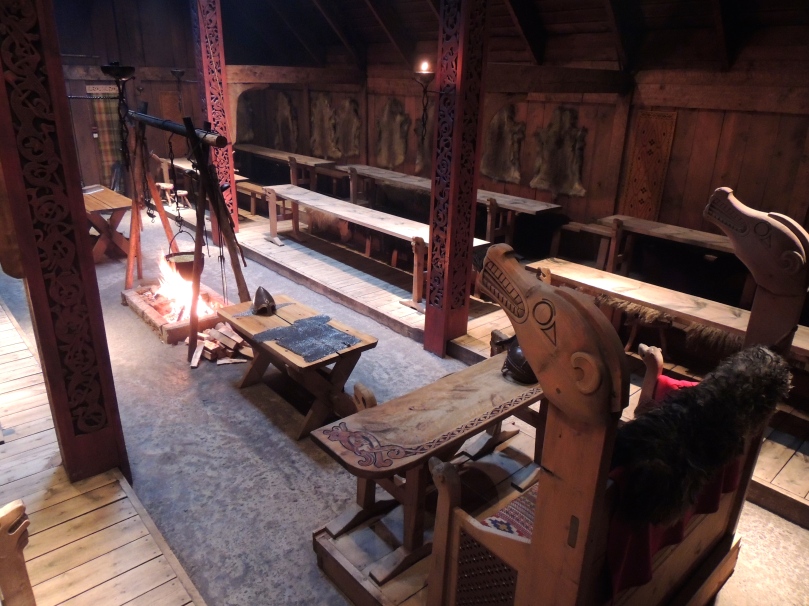
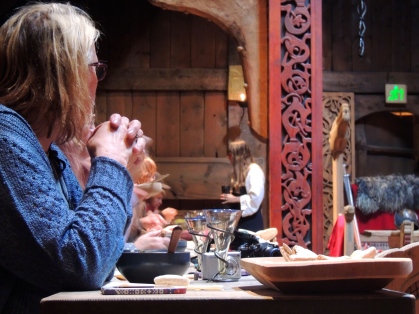




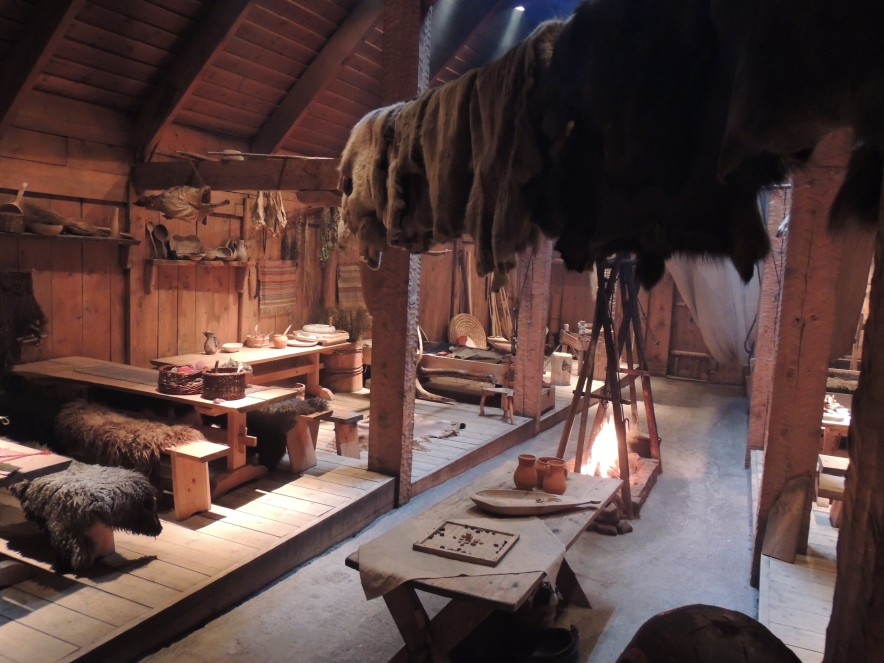










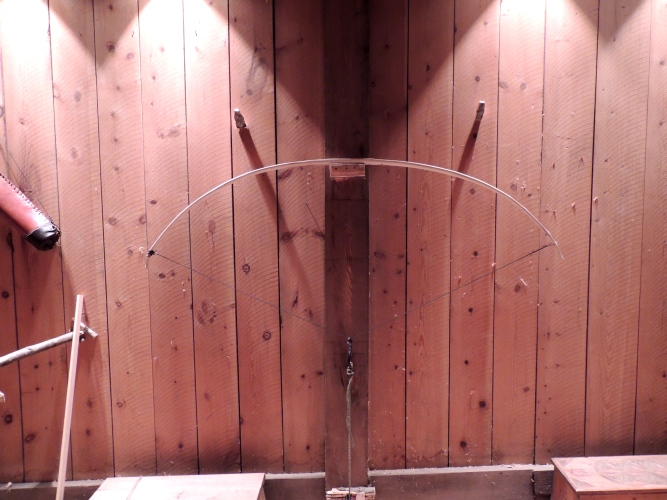



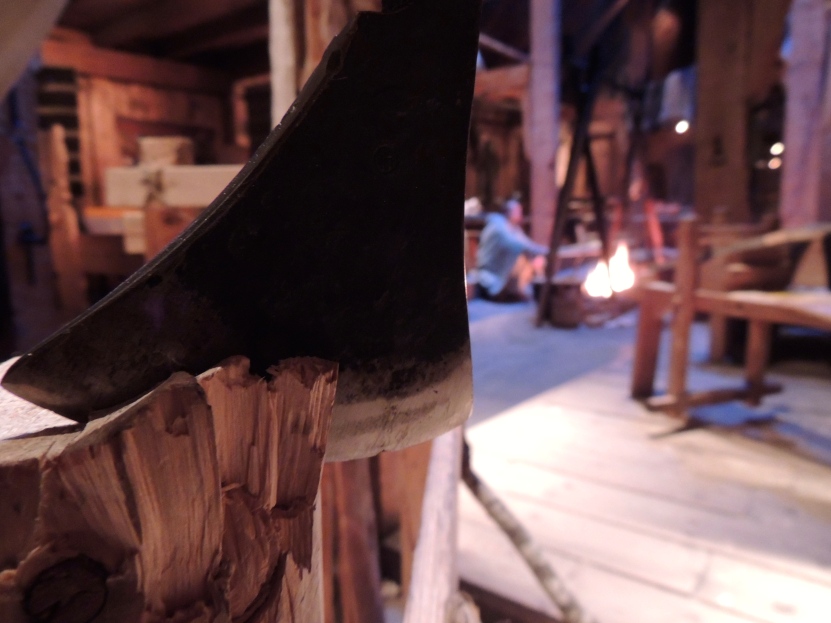

What a lovely expression ‘teaching the wood to bend’, it demonstrates your respect for our natural resources. Another great read, thanks Stephen. I am posting a link on my twitter account.
LikeLiked by 1 person
Thanks fir the share! Yeah I’ve come to like that expression. Id say you have a few of your own by now!
LikeLike
I’m loving your posts, will share!
LikeLiked by 1 person
Thank you very much for the shares! I am glad people are reading them and enjoying them. I have since written and loved part two, and will Beloit ping soon again about a bow that I will made. 😉
LikeLiked by 1 person
You’re so welcome 🙂 Looking forward to more!
LikeLike
Reblogged this on StraumEyjar.
LikeLiked by 1 person
Thanks for sharing this information on bow making and the setting up of your new workshop, you have a way of telling a story that makes it come alive in one’s minds. I can picture myself there.
LikeLiked by 1 person
Thank you so much for saying so! That was my goal! You’ve just made my day! 🙂
LikeLike
Congratulation Stephen your work is fantastic. I really like it.All this is fascinating.Bravo. 🙂
LikeLiked by 1 person
Thank you so much Leone! I’m really pleased you like it! 🙂 Maybe we can meet sometime to chat? 🙂
LikeLiked by 1 person
Thank you for this post and your work.
I run a traditional archery school on the west coast of Canada as well as work on a TV show named Arrow.
Every year the show takes an 8 week break during May & June. I’d like to visit you and your workshop in 2016 to meet you, film your work and you.
Please feel free to email me at the provided email address.
Also, where may I access your thesis on Viking archery?
Thank you,
Patricia
LikeLiked by 1 person
Wow, what a great job! That sounds fantastic I would love to hear more about your work and tell you about mine. I have just sent you a private message on Gmail 🙂
Thanks
Stephen 🙂
LikeLike
good stuff. Keep following your bliss.
LikeLiked by 1 person
Good article, great pictures!
LikeLiked by 1 person
Would also like to read your thesis on Viking archery. Thank you.
MS Technology Education
LikeLiked by 1 person
My thesis isn’t published yet, but Make sure you follow my blog, so I will be posting an article about a bow I made. It will contain many details of my thesis.
LikeLike
Reblogged this on The Obsession Engine.
LikeLiked by 1 person
Be sure to follow. Pre, I will be posting an article on making a Viking age longbow very soon.
LikeLike
You have inspired me to build my dream home, now I only have to make my wife comply. Ha – with permission, of course, and perhaps only the workshop out back and some furnishings. I already have some of what is above, and am working on what I still need, such as the shavehorse. Anyway, thank you, very inspirational.
LikeLiked by 1 person
Thanks! I’m glad I could help! Be sure to follow and check out part two of this article. I will be lost ping the making of a bow here soon too
LikeLike
Fascinating post . Your photo’s are so clear I feel as if I am actually there and feel the atmosphere. That’s because I was once involved with Re enactors and my partner John was with the Archers. He will also be interesting in your blog. Thank you so much for sharing your wonderful work. I am catching up with more of your posts now.
LikeLiked by 1 person
Pingback: The Last Viking Voyage | ArchaeoFox: Exploring the World Through the Past